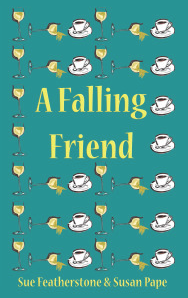Take a good look at the picture that accompanies this post.
Is this the face of a chancer?
Hands up if you said yes because, although friends and
family probably see me as very risk averse, I’ve been taking chances of one
kind or another all my working life.
The pattern was set, aged 18, when I became a trainee
reporter on a small independent newspaper.
It wasn’t just small, it was very small: the
editor-cum-proprietor, his wife, who did the type-setting, and her brother, who
sold the adverts that paid the wages.
And me.
There was no formal training scheme – which was a risk,
because without the requisite professional certificate from the National
Council for the Training of Journalists there wasn’t much chance of moving on
up the career ladder.
But my boss – bless him! – was prepared to invest in me and
signed up to the NCTJ.
Three-and-a-half years later, and having passed law, public
affairs, shorthand and reporting exams, I got the certificate which became my
passport to a new job with a bigger newspaper group.
From there, I progressed through the ranks, eventually
becoming deputy editor of one of the larger weeklies within the group.
Along the way, I became the first journalist to take
maternity leave and to return to work to juggle nappies and news.
But I hit a bit of a brick wall afterwards because, unless
someone died, there didn’t seem much prospect of editing a newspaper of my own.
By then, of course, with a husband, a child and a mortgage,
there was no flexibility to move to another part of the country – which is what
most journalists in a similar position might have done.
So, I took a chance and moved into Public Relations to
become internal communications manager for a public utility company
.
It was a chance because it was a new high profile role in a
company where employee morale was pretty low.
My job was to help create a sense of belonging through
re-vamping the corporate newspaper, launching an in-house news video programme
and working with the chief executive group to launch a monthly team briefing
initiative.
Two years later, after the birth of a second daughter, I
took another chance and became the first senior woman in the company to job
share – only without a job share other half.
Once again chance intervened: I was introduced to Susan Pape,
now my co-author, by Susan’s future husband, who’d done some freelance work for
my company.
I don’t remember much about our first meeting but I was so
desperate I would have teamed up with anyone with the right number of typing
fingers.
Fast forward five years and a chance remark from my sister
led to a change of direction – as a mature student studying English Literature
at Bretton Hall College.
Afterwards I freelanced for a bit and then a chance
telephone call from a friend of a friend led to some casual teaching at
Sheffield Hallam University.
I was there for around 20 years, becoming inaugural course
leader of the BA Journalism programme and co-authoring two journalism books
with Susan, whose career had followed a similar trajectory, albeit at Leeds Trinity.
The books were the result of a chance conversation: we were
both bemoaning the lack of a decent, simple, how-to write like a journalist
text book when one of us said: ‘Why don’t we…?’
We fired off emails to four academic publishers. Three
replied positively within the hour and we eventually signed with Sage where we
published Newspaper Journalism: A
Practical Introduction in 2005 and the follow-up, Feature Writing: A Practical Introduction, a year later.
And then another chance conversation with Susan: ‘Why don’t
we write a bonk buster?’
I’m not sure the result of our efforts, A Falling Friend, is a bona-fide bonk buster: I prefer the term
women’s commercial fiction.
Or, in the words of one reviewer: ‘Chick lit with attitude.’
Finally, the last couple of life-changing chances: unable to
find a publisher we decided to self-publish and started looking for a
professional editor to polish our raw copy into burnished gold.
We found Kate Foster via a women’s writing group on Twitter:
she was offering a discount to group members so we snapped her up.
And, when she launched new indie publisher Lakewater Press
soon afterwards, and offered us a publishing contract, we snapped that up too.
Another chance: Kate is based in Queensland, Australia.
We’re in the UK and all her other authors are in the United States.
It’s a small world.
And now, I’ve taken another chance and given up my lovely
job at Sheffield Hallam to concentrate on writing full-time.
Let’s hope it brings me as much joy as the first time I
chanced my professional luck.
What a great series of chances Sue, thank you so much for being a part of my Chances Fortnight.
About Sue Featherstone
Sue Featherstone is a former journalist and public relations
practitioner turned academic.
Her career started in local newspapers before switching to
PR to become internal communications manager with a large utility company.
She completed a degree in English Literature as a mature
student and subsequently moved into higher education, teaching journalism to
undergraduate students at Sheffield Hallam University.
At the beginning of 2017, Sue left Sheffield Hallam to focus
on her writing.
Together with her friend and writing partner Susan Pape, she
has written two successful journalism text books - Newspaper Journalism: A Practical Introduction; and Feature Writing: A Practical Introduction.
Their first novel, A
Falling Friend, was published by Lakewater Press in 2016 and a sequel will
follow summer 2017.
They now write about books at https://bookloversbooklist.com/
Sue is on twitter @SueF_Writer
A Falling Friend
is available to buy on Amazon here. https://www.amazon.co.uk/Falling-Friend-Sue-Featherstone-ebook/dp/B01CADXSTO/ref=sr_1_1?s=books&ie=UTF8&qid=1469955165&sr=1-1&keywords=a+falling+friend+featherstone




Thank you for inviting me to join you - this is such an interesting feature idea.
ReplyDelete